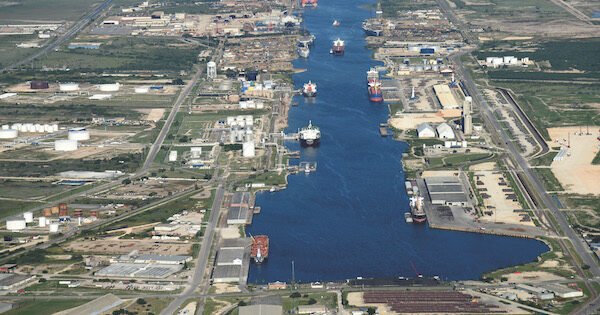By Lisa Segelman
From the May / June 2024 Issue
Site selectors worldwide know that when it comes to North America, there is a buffet of choices filled with outstanding features, natural resources, incentives, and amenities. But one region brings a distinct feature and could offer a clear path to manufacturing success, the region on both sides of the Mexico-United States border.
As site selectors look to the border, they consider the benefits of manufacturing on both sides — something that may come as a surprise to those not familiar with the region. It’s a model worth considering.
Manufacturing on both sides of the border entails creating a footprint in each country by leveraging relationships with neighboring border communities and carefully planning which business functions will take place on either side.


One region that offers potential for investment is Rio South Texas, located at the southernmost point of that state, sub-tropical, and one of the fastest growing areas in the U.S. thanks to its strong labor force, functioning supply chain, and enthusiastic community support.
The region is comprised of the Rio Grande Valley and Laredo, and to the surprise of some, it also includes the 10 Mexican municipalities on the south side of the Rio Grande River. These municipalities offer lower labor costs, proximity to the U.S., and relaxed trade agreements which serve as incentives for companies that want to enjoy the benefits of manufacturing in Mexico but like the idea of having their operation close to the U.S.
Many companies split their functions between the two countries by establishing a manufacturing facility near the Mexican border in order to take advantage of lower labor costs while keeping inventory, administrative and higher-level operations on the U.S. side of the border. This model brings jobs and economic growth to the border region.
Dual-Nation Flexibility
This bi-national region of the Mexico-United States border offers trade advantages with two nations working as one. Companies can start up or scale up on one or both sides of the Rio Grande River. Companies can take advantage of the favorable labor costs in Mexico (which also gives that labor force a boost), and benefiting from cost-effective production costs, import-export tariffs, and duties at the same time.
“When we talk to companies looking to relocate, we always include Mexico in the equation for trade, location and labor reasons. Mexico offers incentives through a program called IMMEX that enables foreign companies to operate in Mexico under a preferential, low-tax cost structure.”
— Rick Carerra, Director of Economic Development, COSTEP
USMCA Replaces NAFTA for Some Positive Change. The USMCA (United States-Mexico-Canada Agreement), which replaced NAFTA, (the North American Free Trade Agreement) in 2020, broke down or eliminated barriers to trade and investment which makes manufacturing in the border region attractive. This new agreement increases the amount of product that needs to be produced in North America. For example, under the new agreement, 75% of car parts have to come from North America, which is up from 62.5% under NAFTA.
Talent Pipeline. Rio South Texas has a strong workforce with favorable demographics. On the U.S. side, the region has a population of 1.7 million with a median age of 30; the region on the Mexico side offers a population of 3.5 million with a median age of 26, and the regional population under 25 numbering 1.5 million.
Location and Logistics. With a location at the geographic crossroads of North American trade routes, Rio South Texas is positioned for high-speed access to 25% of the global consumer market in a temperate climate that keeps shipping on go, all year round. Manufacturing in this region allows companies to connect domestically and across North America with interstate highways and Class I rail, which also link up globally via deep water global ports. In addition, the region’s logistical portfolio also includes international airports for passengers and cargo as well as the Space X launch site at Starbase, TX.
“When we talk to companies looking to relocate, we always include Mexico in the equation for trade, location and labor reasons,” says Rick Carerra, Director of Economic Development at COSTEP, Council for South Texas Economic Progress.
“Mexico offers incentives through a program called IMMEX that enables foreign companies to operate in Mexico under a preferential, low-tax cost structure,” he continues. “COSTEP has the bandwidth to help site selectors work their way through required certifications and permits and take them across the border to visit potential sites.”
COSTEP’s goal is to attract new investment from Laredo to Brownsville, Texas, all while introducing interested companies to the benefits of Mexico. They are adept at introducing companies to the area, helping them find a property, and managing relocations, expansions, and startups.
Nearshoring Driving Growth. Nearshoring (locating/relocating operations closer to home markets, often to a nearby country in the same region), is experiencing a surge in Rio South Texas. Nearshoring is rapidly replacing outsourcing, which is a process where business contracts work with a third-party provider which can be in their own home country, across borders, or across the world.
“Manufacturing in Rio South Texas is attractive for companies that experienced pandemic-era supply chain snarls like goods-laden ships that were forced to wait out at sea. Companies have a real interest in wanting to decrease reliance on trade between the US and China amid geopolitical uncertainty,” says Adam Gonzalez, COSTEP’s Chief Executive Officer.
“Connectivity is key in the region with 20 international bridges, excellent network of highways connecting all of North America, seven international airports, three seaports, three Class I railroads, and over 100 industrial parks,” he adds
Established & New Industries Manufacture Side By Side
In the region, the automotive industry alone is home to 1,000 tier suppliers and 30 automotive OEMs. The Texas-Mexico automotive nexus employs more than one million people. In 2020 General Motors received the Supplier Quality Excellence award for its Tamaulipas automotive plants, citing superior supply times and quality of parts.
In addition to automotive, biotechnology, shale exploration, and traditional energy, there is growth in the alternative energy space. There is a surge in the region with Texas being ranked second in the nation for installed solar capacity.
“The Port of Brownsville’s roots are in cotton and grains, followed later on by heavy industry like fuel, steel, aluminum and wind turbines,” says COSTEP’s Carerra. “Now there’s a third wave—we have welcomed a Turkish light manufacturer in the food industry to the port industrial park. Things are happening beyond the industries people think of when they think of our deep water port.”
In Mexico: Medline Builds A New Plant In Nuevo Laredo
Samsung, Tesla Projects Impact Austin; Port Of Brownsville Attracts $25M Food Investment
In Williamson County, TX, continued investment by Samsung and Tesla is fueling economic growth, while Westa Foods locates in the south Texas region. Read more…
In February 2024, Medline, a company with a 35-year history in Nuevo Laredo, further committed to the Mexican state of Tamaulipas by opening a new plant in the area and adding 930 jobs, bringing the number to 4,200.
Ninfa Cantú Deándar, the Secretary of Economy of Tamaulipas, considers the new plant a “clear example of the favorable investment climate in the state”.
Medline began operations in Nuevo Laredo in 1988 as a garment industry player which made medical apparel. In 2003, Medline moved to the Oradel Industrial Park and redesigned its product list to include surgical products, medical devices, and plastic injections.
Representing a US$16.2 million investment, the new Medline Hudson RCI plant will enable the company to increase its production capacity and strengthen their position in the global market. The company is also committed to social responsibility and the development of the Nuevo Laredo community.





